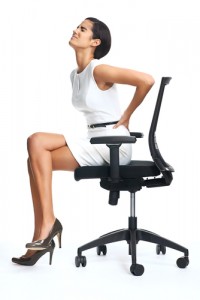Posted on July 29, 2016 by Kate Halsall
Did you know that 8 out of 10 people will suffer with non-specific lower back pain – that’s pain which cannot be attributed to spinal structural problems or infection. It’s a scary number – so why aren’t we doing more to help stop the pain from occurring in the first place? It’s probably because as per our human nature, we wait until something hurts before we take action. But it’s never too soon – you need to act NOW!! So here’s a blog which can help 8 out of 10 of you: Posture Advice Part 3 – Lordosis.
What Is Lordosis?
We all have a natural curve in our spine. However, Lordosis is where the curve of the lower back is exaggerated. It means you have an anterior pelvic tilt – sounds exciting doesn’t it!? It just means that your pelvis is tilted forward which adds to that curve in your lower back.
What Causes It?
There are many causes for an increased inward curve of the lumbar spine.
- Poor posture
- Pregnancy
- Obesity
- Physical problems with the discs in the spine or vertebrae alignment
- Muscle dysfunction around the hip, spine and glutes
- Sitting for too long
Why is it Bad For You?
Not only is lordosis one of the main reasons people experience lower back pain (it should be noted that some people with lordosis don’t experience any pain), but in addition:
- The lower back supports a lot of your body weight, so this increased curve means an increased pressure on your discs
- It can lead to changes in your upper body posture i.e. shoulders rolled forward, forward head or kyphosis.
- It can cause muscle spasms, tingling or numbness in the legs, bladder or bowel problems
How Can I Fix It?
There are a number of ways you can help yourself if you do have lordosis: strengthen your core, identify the weak and tight muscles (usually the glutes re weak and the hip flexors tight) and work to normalise them, physiotherapy and so on. That said, there’s no point just rushing out and doing plank after plank if your back is still curved as you’re doing them. Try these instead:
- Pelvic Tilts – you can do these either standing against a wall or lying down. Slowly rock your pelvis forward and backwards, effectively flattening your lower back against the floor (or the wall).
Take it from someone who knows, back is not fun. It can be completely debilitating, painful beyond belief, and seemingly never ending! Why wait until it gets to that stage? Help yourself now.
Further Reading (and watching!):
http://www.functionalpatterns.com/lower-back-pain-fix-sway-back-arched-back-posture-problem/


